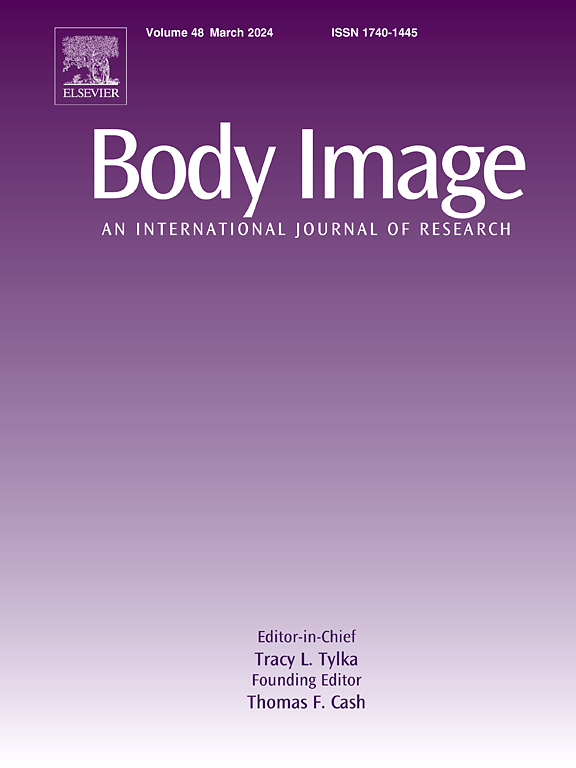TikTok面部滤镜使用与身体形象变量之间的关联
IF 5.4
1区 心理学
Q1 PSYCHIATRY
引用次数: 0
摘要
研究发现,社交媒体的使用与对身体形象的担忧有关。改变面部的过滤器可能会对与外表相关的感知和认知产生负面影响。由于没有已知的研究检查过TikTok中的这些过滤器,本研究调查了TikTok面部过滤器使用、面部不满和身体形象关注之间的关系。参与者(N = 397)是在过去两周内报告使用TikTok的本科生。符合条件的参与者完成了一系列有关社交媒体使用和身体形象的调查。进行了线性回归,以检查TikTok面部过滤器的使用(外观增强过滤器和愚蠢过滤器)与身体形象结果之间的关系。两种类型的滤镜使用与所有身体形象结果之间发现了显著的正相关。然而,当两种类型的过滤器使用都包含在相同的回归模型中时,外观改善过滤器使用仍然显着,而愚蠢的过滤器使用变得不显着。这是第一批研究面部滤镜使用的研究之一,也是第一个在TikTok背景下研究这种行为的研究。未来的研究人员应该致力于在实验和/或纵向设计中检查这些结构,以确定过滤器使用和身体图像结果的时间顺序,以进一步理解这种行为。本文章由计算机程序翻译,如有差异,请以英文原文为准。
Associations between TikTok facial filter use and body image variables
Research has found social media use to be associated with body image concerns. Face-altering filters may negatively impact appearance-related perceptions and cognitions. As no known study has examined these filters within TikTok, the present study investigated the relationship between TikTok facial filter use, facial dissatisfaction, and body image concern. Participants (N = 397) were undergraduate students reporting TikTok use in the past 2 weeks. Eligible participants completed a battery of surveys relating to social media use and body image. Linear regressions were conducted to examine the association between TikTok facial filter use (appearance-enhancing and goofy filters) and body image outcomes. Significant positive associations were found between both types of filter use and all body image outcomes. However, when both types of filter use were included in the same regression models, appearance-improving filter use remained significant while goofy filter use became non-significant. This is one of the first studies to examine facial filter use and the first to examine this behavior in the context of TikTok. Future researchers should aim to examine these constructs in experimental and/or longitudinal designs to identify temporal ordering of filter usage and body image outcomes to further understanding of this behavior.
求助全文
通过发布文献求助,成功后即可免费获取论文全文。
去求助
来源期刊

Body Image
Multiple-
CiteScore
8.70
自引率
28.80%
发文量
174
期刊介绍:
Body Image is an international, peer-reviewed journal that publishes high-quality, scientific articles on body image and human physical appearance. Body Image is a multi-faceted concept that refers to persons perceptions and attitudes about their own body, particularly but not exclusively its appearance. The journal invites contributions from a broad range of disciplines-psychological science, other social and behavioral sciences, and medical and health sciences. The journal publishes original research articles, brief research reports, theoretical and review papers, and science-based practitioner reports of interest. Dissertation abstracts are also published online, and the journal gives an annual award for the best doctoral dissertation in this field.
 求助内容:
求助内容: 应助结果提醒方式:
应助结果提醒方式:


